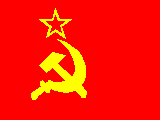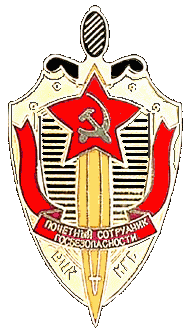





 Second Chief Directorate
Second Chief Directorate
The Second Chief Directorate was responsible for internal security, although some of its functions were assumed by the Fifth Chief Directorate. The Directorate included twelve numbered Departments, the Political Security Service, the Industrial Security Directorate, and a Technical Support Group.
Six of the numbered Departments were responsible monitoring and countering the activities of foreign embassy personnel:
The 1st Department staff in the early 1970s included some fifty staff officers and three hundred surveillance officers from the Surveillance Directorate. Headquartered a half a mile from the United States embassy in a five-story, the Department had five Sections.
2nd Department -- British Commonwealth
3rd Department -- Federal Republic of Germany, Austria, Scandinavia
4th Department -- All other Western European nations
5th Department -- Non-European developed countries
6th Department -- Non-European developing countries
The 7th Department was responsible for operations against tourists. As of the early 1970s the staff of two hundred was evenly divided between Moscow and the rest of the Soviet Union, along with some sixteen hundred part-time informants and agents.
The 8th Department was responsible for the computer information systems of the Second Chief Directorate.
The 9th Department was tasked with monitoring and recruitment of foreign students, including the use of faculty and student informants at Soviet universities.
The 10th Department was responsible for influencing and recruiting foreign journalists. It also staffs the Foreign Ministry's Directorate for Servicing the Diplomatic Corps (UPDK.
The 11th Department regulated international travel by Soviet citizens.
The 12th Department was responsible for investigation of corruption, graft, and waste at government enterprises.
The Political Security Service, often called "The Service" (Sluzhba) within the KGB, consisted of twelve Directions (Napravlenipe) until 1969, when the 5th, 6th, 7th, 8th, and 9th Directions reformed into a new Fifth Chief Directorate.
10th Direction was responsible for countering economic crimes such as currency speculation and black market activities.
11th Direction was responsible for monitoring dissidents.
12th Direction was created in 1963 for operations against Chinese diplomats in Moscow.
The Technical Support Group was responsible for surreptitious entry operations to penetrate targets ranging from foreign embassies to the homes of Soviet citizens.
The Industrial Security Directorate was responsible for the security of important production and research facilities, as well as the utilization of Soviet commercial activities for clandestine operations. Of the Directorate's six Departments, four were responsible for heavy industry, armament factories, nuclear research, and production centers. The 5th Department, which operated within the Ministry of Foreign Trade, was responsible for commercial exhibitions and Soviet trade associations. The 6th Department was responsible for operations against foreign seamen in at Soviet ports.
